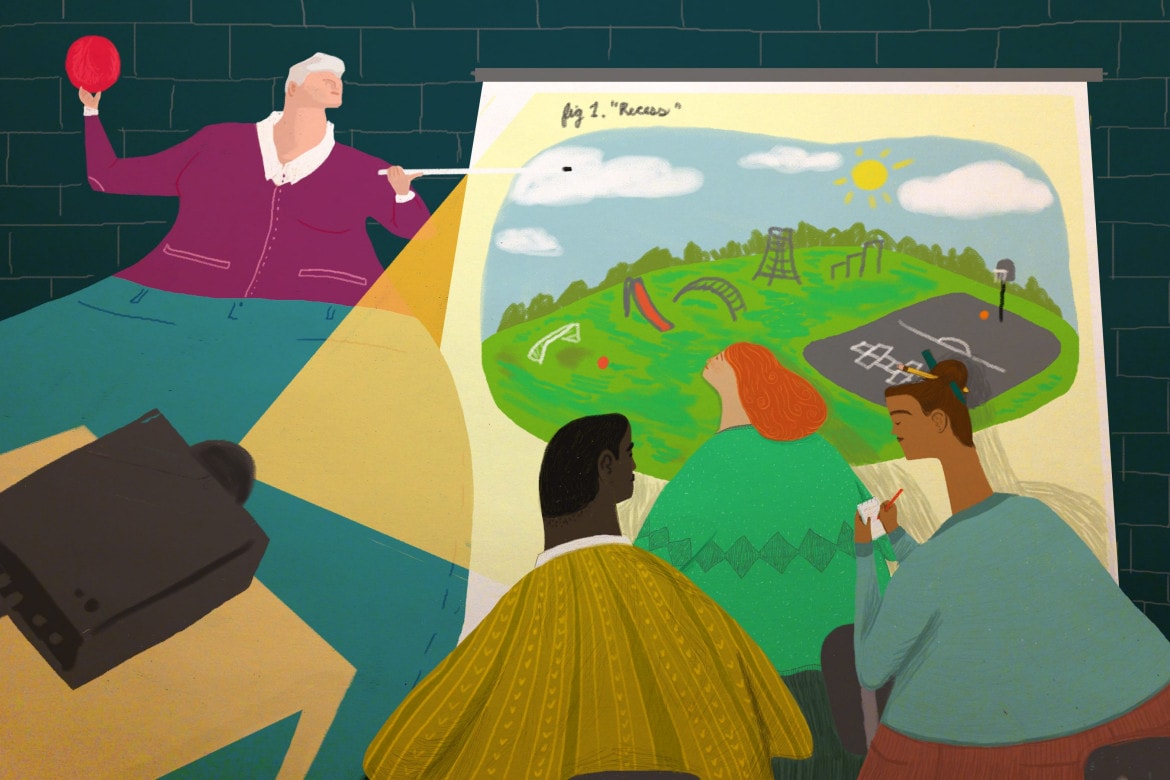Not All Fun And Games: New Guidelines Urge Schools To Rethink Recess

Published February 5th, 2017 at 6:00 AM
What’s the best time for students to have recess? Before lunch, or after? What happens if it rains? If students are misbehaving, is it a good idea to punish them by making them sit out recess?
Those are just a few of the issues addressed in new guidelines designed to help schools have good recess. The recommendations come from a group called SHAPE (Society of Health and Physical Educators) America and from the Centers for Disease Control and Prevention.
Recess might seem simple — just open the doors and let the kids run free. But only eight states have policies that require it, according to last year’s Shape of the Nation report. And when researchers started looking, they found very little consistency or guidance about what makes recess effective.
The new guidelines, in two documents, offer educators a list of 19 evidence-based strategies and a template to show them what a good recess policy looks like.
Some of the suggestions seem obvious, like “promote a physically active environment” or “designate spaces for outdoor and indoor recess.” But there’s a point there. Without a designated indoor space, for example, schools might just cancel recess when it’s raining or snowing.
Oh, and the answers to those other questions above? Before lunch is better, the guidelines say, because recess can make kids hungry, and thus more likely to eat healthy foods like fruits and vegetables. And maybe they won’t throw food away uneaten. And they say recess should never be used as punishment, because it deprives students of physical activity — which can be a much-needed outlet.
“There’s a lot that has to be squeezed in[to] that time a student is in class,” says Michelle Carter, senior program manager at SHAPE who helped develop the guidelines. “I don’t think there’s a value placed in recess and physical activity.”
The guidelines seek to impress on schools that recess isn’t just downtime for educators or playtime for students. Research has shown that play helps students pay attention in class, prevents bullying and develops social and emotional learning.
An evolving process
One school that has tried to put these guidelines into practice is Thomasville Primary School in Thomasville, N.C. The researchers at SHAPE and the CDC used the pre-K through third grade school as a case study in developing the new policies.
Alyson Shoaf, the school’s active living wellness coordinator, says the guidelines helped make recess part of the curriculum. “There was really just nothing out there to help the school-level people support and implement this stuff,” she says.
Before the new policy, Shoaf says, recess was often withheld from students as punishment. Teachers might be looking at their phones and not paying attention. And sometimes, students got into arguments.
The new approach brought several key changes: creating special zones on the playground where teachers monitor students, scheduling teachers for recess duty and giving students access to the entire playground. The goals? More structure, more freedom and more fun.
Initially, Thomasville’s principal wasn’t too wild about the idea.
“Absolutely not,” said principal Angela Moore. When Shoaf first brought the idea to her, Moore says the program seemed too structured, and she thought it would force the students to play games that didn’t interest them.
But Moore says she changed her mind when she saw how much more active students were at recess. And how much more the teachers were involved. The numbers prove it was working: Schoolwide discipline referrals, she says, have declined — from more than 100 last school year, to 24 so far this year. If that pattern continues for the rest of the school year, Moore notes, it would be a roughly 50 percent drop.
Alyson Shoaf says some teachers needed extra convincing, too.
“This was a process. It did not just happen overnight,” Moore says. “And it’s still a process.”
No equipment? No problem
A concern at some schools — especially in low-income neighborhoods — might be whether a structured recess program would require a lot of expensive equipment. Not so, says Michelle Carter of SHAPE.
She’s a former physical education teacher, and she knows the struggle educators face when there are minimal resources.
“You don’t need equipment to have recess,” Carter says. “If you have a place for them to go and you have adult supervision and this plan in place, you can have recess for students.”
9(MDA1MjcyMDE0MDEyNzUzOTU1NTMzNmE5NQ010))

